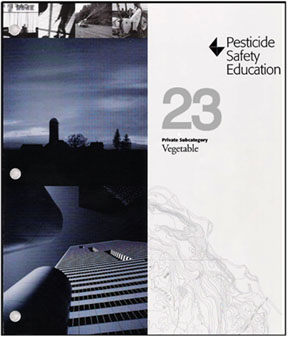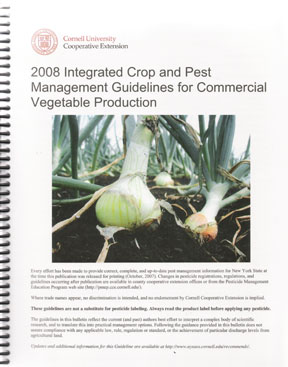|
S. |
- Safener.
-
Chemical that reduces the phytotoxicity of another chemical.
- Secondary pest.
-
A pest that usually does little if any damage but can become a serious pest
under certain conditions, e.g., when insecticide applications destroy a given
insect's predators and parasites.
- Selective insecticide.
-
One that kills selected insects, but spares many or most of the other organisms,
including beneficial species, either through different toxic action or the
manner in which insecticide is used.
- Selective pesticide.
-
One that, while killing the pest individuals, spares much or most of the other
fauna or flora, including beneficial species, either through differential toxic
action or through the manner in which the pesticide is used (formulation,
dosage, timing, placement, etc.).
- Senescence.
-
Process or state of growing old.
- Sex lure.
-
Synthetic chemical that acts as the natural lure (pheromone) for one sex of an
insect species.
- Signal word.
-
A required word that appears on every pesticide label to denote the relative
toxicity of the product. The signal words are either Danger-Poison for highly
toxic compounds, Warning for moderately toxic, or Caution for slightly toxic.
- Slimicide.
-
Chemical used to prevent slimy growth, as in wood-pulping processes for
manufacture of paper and paperboard.
- Slurry.
-
Thin, watery mixture, such as liquid mud, cement, etc. Fungicides and some
insecticides are applied to seeds as slurries to produce thick coating and
reduce dustiness.
- Soil application.
-
Application of pesticide made primarily to soil surface rather than to
vegetation.
- Soil persistence.
-
Length of time that a pesticide application on or in soil remains effective.
- Soluble powder.
-
A finely ground, solid material that will dissolve in water or some other liquid
carrier.
- Spot treatment.
-
Application to localized or restricted areas, as differentiated from overall,
broadcast, or complete coverage.
- Spreader.
-
Ingredient added to spray mixture to improve contact between pesticide and plant
surface.
- Sticker.
-
Ingredient added to spray or dust to improve its adherence to plants.
- Stomach poison.
-
A pesticide that must be eaten by an insect or other animal in order to kill or
control the animal.
- Structural pests.
-
Pests that attack and destroy buildings and other structures, clothing, stored
food, and manufactured and processed goods; for example, termites, cockroaches,
clothes moths, rats, and dry-rot fungi.
- Stupefacient or soporific.
-
Drug used as a pesticide to cause birds to enter a state of stupor so they can
be captured and removed, or to frighten other birds away from the area.
- Subcutaneous toxicity.
-
The toxicity determined following its injection just below the skin.
- Surfactant.
-
Ingredient that aids or enhances the surface-modifying properties of a pesticide
formulation (wetting agent, emulsifier, or spreader).
- Suspension.
-
Finely divided solid particles dispersed in a liquid.
- Synergism.
-
Increased activity resulting from the effect of one chemical on another.
- Synthesize.
-
Production of a compound by joining various elements or simpler compounds.
- Systemic.
-
Compound that is absorbed and translocated throughout the plant or animal.
|





